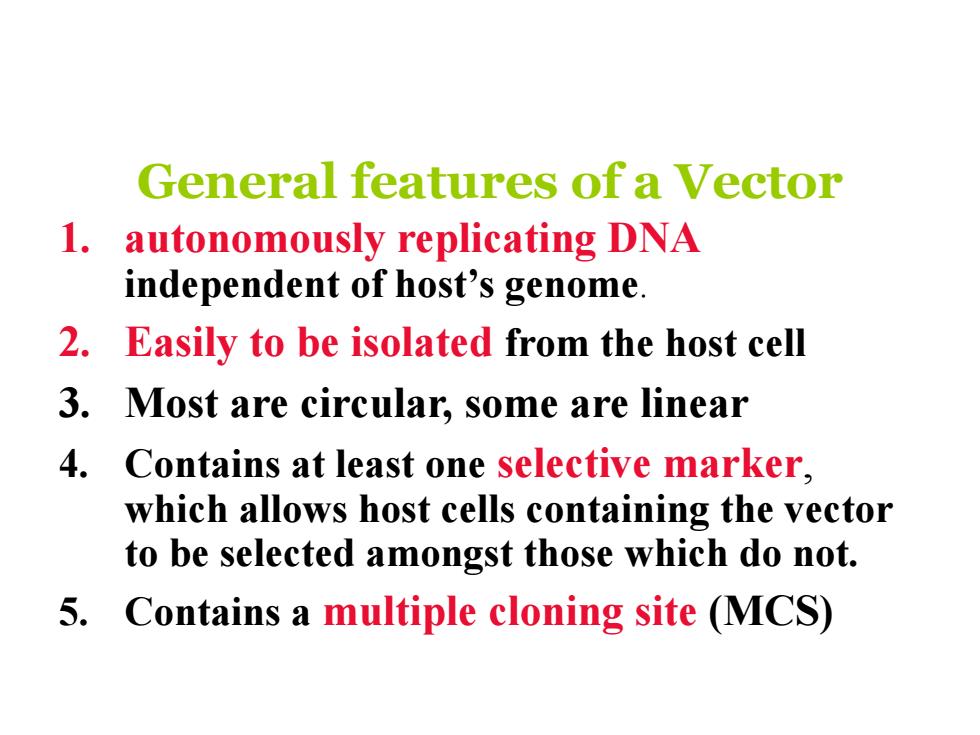
General features of a Vector 1. autonomously replicating DNA independent of host’s genome. 2. Easily to be isolated from the host cell 3. Most are circular, some are linear 4. Contains at least one selective marker, which allows host cells containing the vector to be selected amongst those which do not. 5. Contains a multiple cloning site (MCS)
General features of a Vector 1. autonomously replicating DNA independent of host’s genome. 2. Easily to be isolated from the host cell 3. Most are circular, some are linear 4. Contains at least one selective marker, which allows host cells containing the vector to be selected amongst those which do not. 5. Contains a multiple cloning site (MCS)
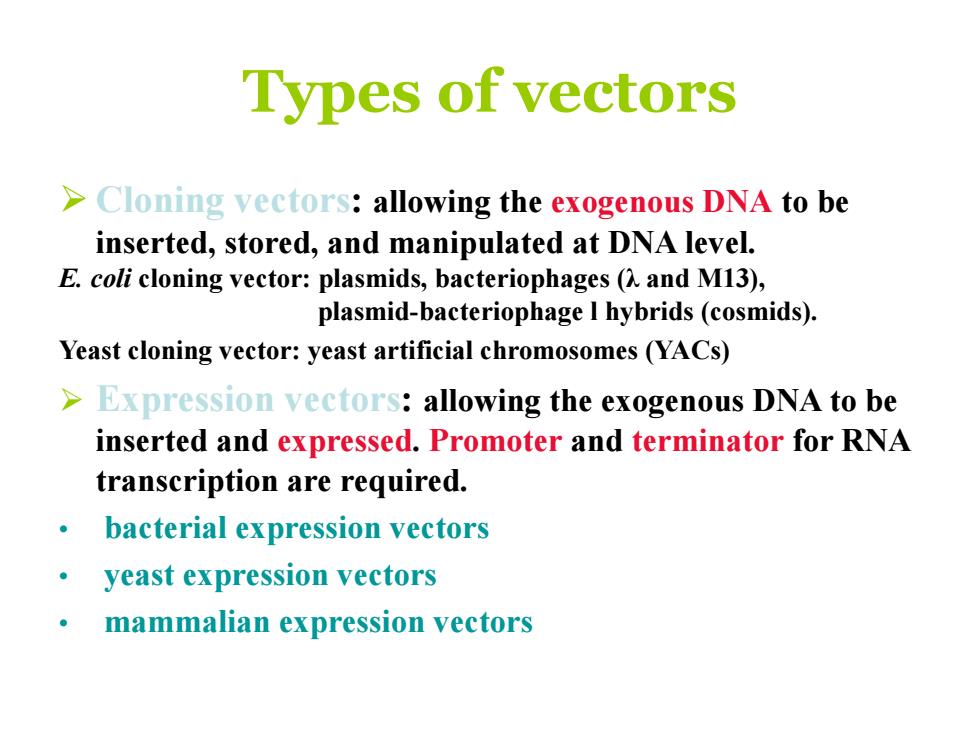
Types of vectors Ø Cloning vectors: allowing the exogenous DNA to be inserted, stored, and manipulated at DNA level. E. coli cloning vector: plasmids, bacteriophages (λ and M13), plasmid-bacteriophage l hybrids (cosmids). Yeast cloning vector: yeast artificial chromosomes (YACs) Ø Expression vectors: allowing the exogenous DNA to be inserted and expressed. Promoter and terminator for RNA transcription are required. • bacterial expression vectors • yeast expression vectors • mammalian expression vectors
Types of vectors Ø Cloning vectors: allowing the exogenous DNA to be inserted, stored, and manipulated at DNA level. E. coli cloning vector: plasmids, bacteriophages (λ and M13), plasmid-bacteriophage l hybrids (cosmids). Yeast cloning vector: yeast artificial chromosomes (YACs) Ø Expression vectors: allowing the exogenous DNA to be inserted and expressed. Promoter and terminator for RNA transcription are required. • bacterial expression vectors • yeast expression vectors • mammalian expression vectors
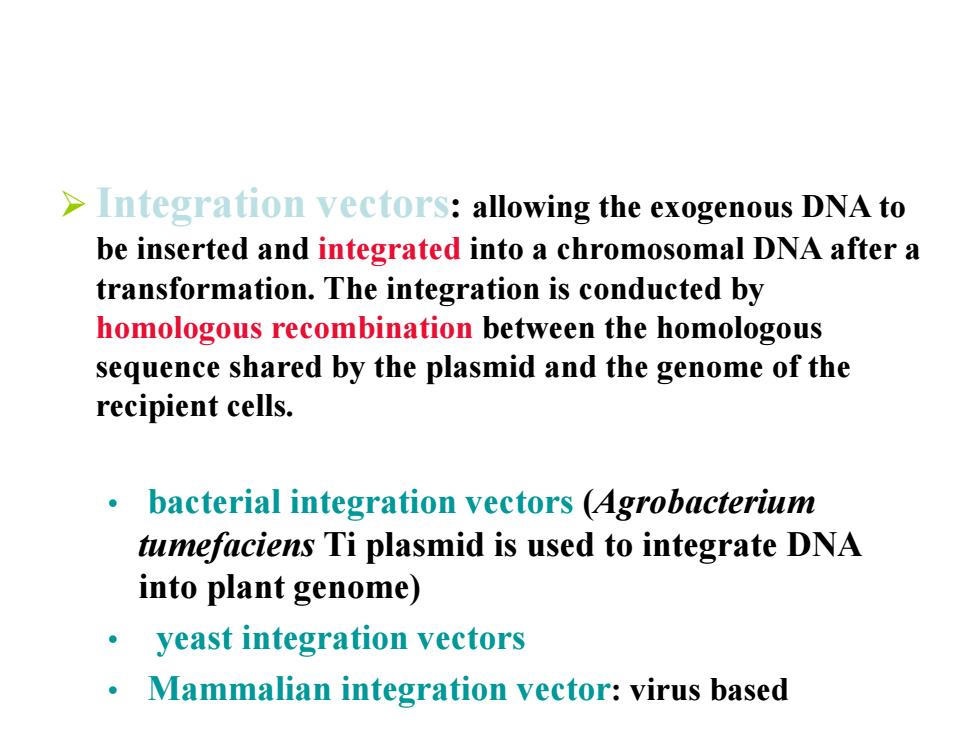
Ø Integration vectors: allowing the exogenous DNA to be inserted and integrated into a chromosomal DNA after a transformation. The integration is conducted by homologous recombination between the homologous sequence shared by the plasmid and the genome of the recipient cells. • bacterial integration vectors (Agrobacterium tumefaciens Ti plasmid is used to integrate DNA into plant genome) • yeast integration vectors • Mammalian integration vector: virus based
Ø Integration vectors: allowing the exogenous DNA to be inserted and integrated into a chromosomal DNA after a transformation. The integration is conducted by homologous recombination between the homologous sequence shared by the plasmid and the genome of the recipient cells. • bacterial integration vectors (Agrobacterium tumefaciens Ti plasmid is used to integrate DNA into plant genome) • yeast integration vectors • Mammalian integration vector: virus based
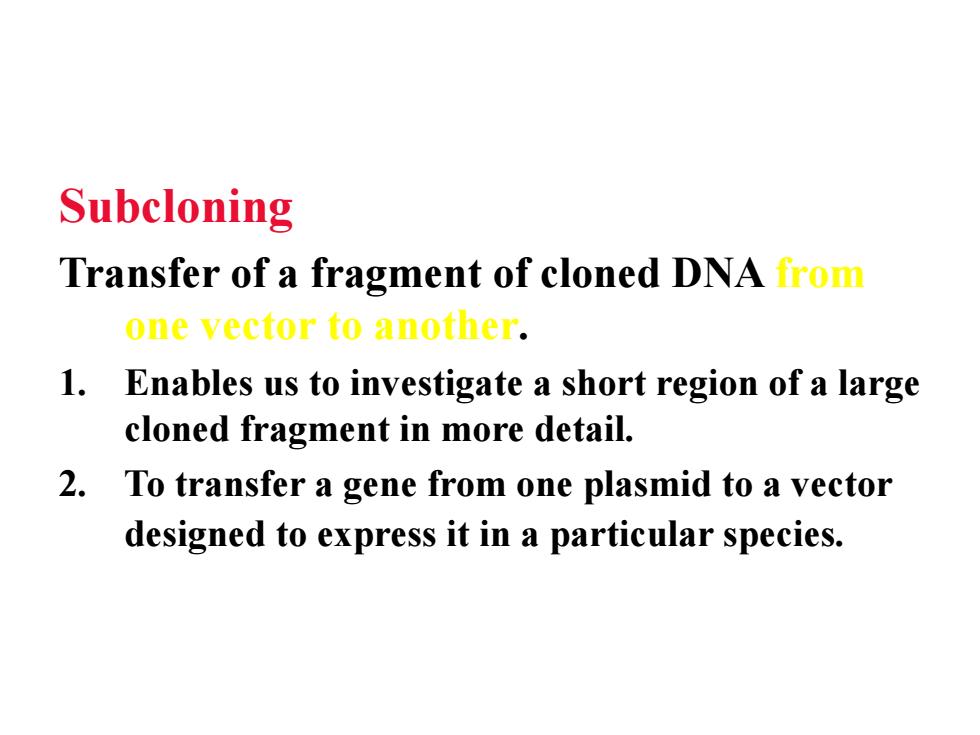
Subcloning Transfer of a fragment of cloned DNA from one vector to another. 1. Enables us to investigate a short region of a large cloned fragment in more detail. 2. To transfer a gene from one plasmid to a vector designed to express it in a particular species
Subcloning Transfer of a fragment of cloned DNA from one vector to another. 1. Enables us to investigate a short region of a large cloned fragment in more detail. 2. To transfer a gene from one plasmid to a vector designed to express it in a particular species
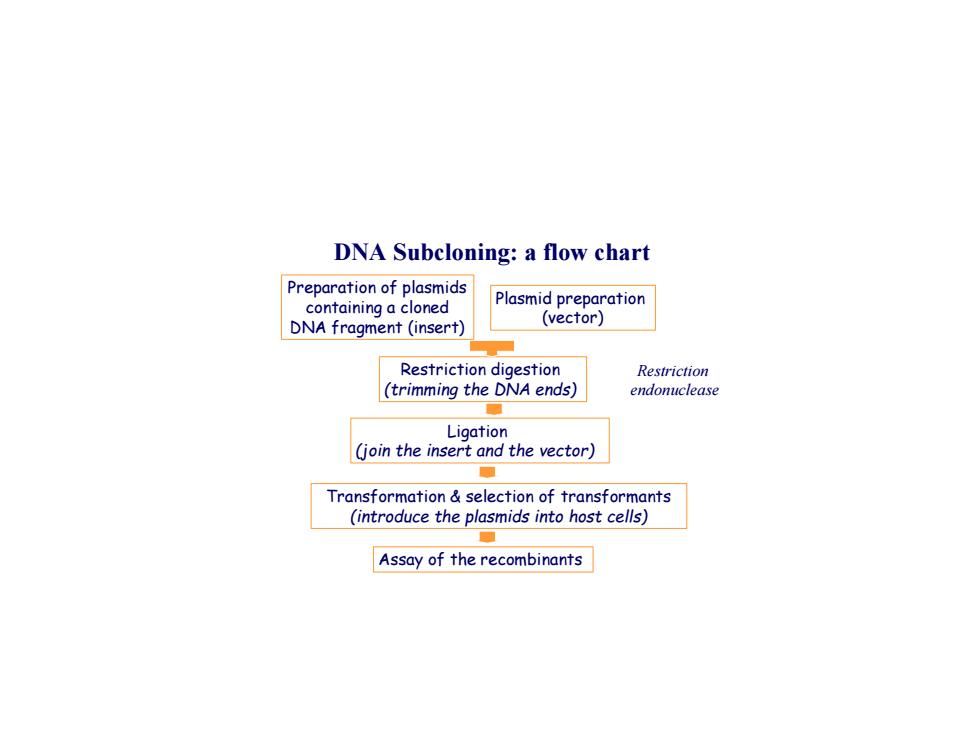
Preparation of plasmids containing a cloned DNA fragment (insert) Plasmid preparation (vector) Restriction digestion (trimming the DNA ends) Ligation (join the insert and the vector) Transformation & selection of transformants (introduce the plasmids into host cells) Assay of the recombinants DNA Subcloning: a flow chart Restriction endonuclease
Preparation of plasmids containing a cloned DNA fragment (insert) Plasmid preparation (vector) Restriction digestion (trimming the DNA ends) Ligation (join the insert and the vector) Transformation & selection of transformants (introduce the plasmids into host cells) Assay of the recombinants DNA Subcloning: a flow chart Restriction endonuclease